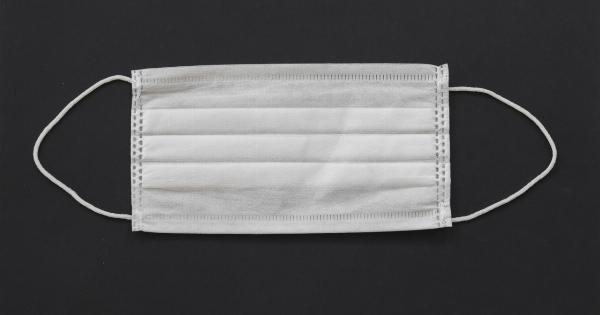When the nose gets congested and runny, and there is discomfort in the throat, it’s easy to assume it’s just a common cold. However, there’s another condition that shares many of the same symptoms: allergic rhinitis.
Although cold and allergic rhinitis may seem similar, it’s important to understand the key differences between the two in order to receive appropriate treatment. Let’s delve into the characteristics that set these two conditions apart.
1. Cause
One of the key ways to differentiate between a cold and allergic rhinitis is understanding their respective causes:.
Cold: A common cold is caused by a viral infection. There are over 200 viruses that can lead to cold symptoms. They spread via droplets in the air or by touching contaminated surfaces.
Allergic Rhinitis: This condition, commonly known as hay fever, is caused by an allergic response to certain substances in the environment. These triggers, called allergens, can include pollen, pet dander, dust mites, and mold spores.
2. Duration of Symptoms
The duration of symptoms is often a good indicator of whether a person is experiencing a cold or allergic rhinitis.
Cold: Colds typically last for about 7 to 10 days. Symptoms usually start to subside after the first few days, with gradual improvement over the following week.
Allergic Rhinitis: Symptoms of allergic rhinitis can be persistent or intermittent, depending on the individual and their exposure to allergens.
If left untreated or with ongoing exposure to allergens, symptoms can last for weeks or even months.
3. Seasonal vs. Year-Round Symptoms
The timing and duration of symptoms can also provide clues about whether someone is experiencing a cold or allergic rhinitis.
Cold: The common cold is often more prevalent during the winter months. Symptoms may appear suddenly and can be accompanied by other cold-related symptoms, such as cough, sore throat, and mild body aches.
Allergic Rhinitis: Depending on the specific allergens triggering the allergic response, symptoms can occur seasonally or persist throughout the year.
Seasonal allergic rhinitis, commonly known as hay fever, typically occurs during specific times when certain allergens, such as pollen, are present in the environment.
4. Involvement of Itchy Eyes
While the nose and throat are common areas affected by both cold and allergic rhinitis, the presence of itchy eyes can help differentiate between the two.
Cold: Itchy or watery eyes are not typically associated with the common cold but may occur in rare cases.
Allergic Rhinitis: Itchy, red, and watery eyes are common symptoms of allergic rhinitis, especially when the triggering allergen is present in the environment.
5. Sneezing Frequency
Although sneezing is a symptom often seen in both cold and allergic rhinitis, the frequency and characteristics of the sneezing can be different.
Cold: Sneezing is a common symptom of a cold. However, it is usually seen in the initial stages and tends to decrease as the cold progresses.
Allergic Rhinitis: Sneezing caused by allergic rhinitis is often frequent and persistent. It can occur throughout the day and may worsen when exposed to allergens, such as pollen or pet dander.
6. Body Aches and Fever
The presence of certain symptoms, such as body aches and fever, can be helpful in determining whether someone has a cold or allergic rhinitis.
Cold: Body aches and low-grade fever are typical symptoms of a cold. These symptoms are less commonly associated with allergic rhinitis.
Allergic Rhinitis: Body aches and fever are not typical symptoms of allergic rhinitis. If these symptoms are present, it may indicate an underlying infection rather than solely allergic rhinitis.
7. Nasal Discharge
The color and consistency of nasal discharge can provide additional insights into the nature of the condition.
Cold: The nasal discharge associated with a cold is often thicker and varies in color from clear to yellow or green as the illness progresses.
Allergic Rhinitis: Nasal discharge caused by allergic rhinitis is usually clear and watery. It may appear profuse and can be accompanied by post-nasal drip.
8. Time of Onset
When symptoms first appear can often indicate whether a person has a cold or allergic rhinitis.
Cold: Cold symptoms typically have a gradual onset. A person may initially experience mild symptoms that progressively worsen over the course of a few days.
Allergic Rhinitis: Allergic rhinitis symptoms can appear suddenly after exposure to a known allergen, or they may develop gradually over time with repeated exposure.
9. Response to Medications
The response to certain medications can provide valuable information for distinguishing between a cold and allergic rhinitis.
Cold: Over-the-counter cold medications, such as decongestants and cough suppressants, may provide temporary relief from cold symptoms, but they do not treat the underlying viral infection.
Allergic Rhinitis: Antihistamines and nasal corticosteroids, which target the underlying allergic response, can effectively alleviate symptoms of allergic rhinitis.
10. Medical History and Allergies
Considering a person’s medical history and previous allergies can help differentiate between a cold and allergic rhinitis.
Cold: Colds are viral infections that can affect anyone, regardless of their medical history or allergies.
Allergic Rhinitis: People with a history of allergies, such as asthma or atopic dermatitis, are more likely to develop allergic rhinitis. They may also have a family history of allergies.
In conclusion, although colds and allergic rhinitis share some similar symptoms, understanding the key differences between the two is essential.
Factors such as the cause, duration of symptoms, seasonal patterns, presence of itchy eyes, sneezing frequency, body aches, fever, nasal discharge, time of onset, response to medications, and medical history can help differentiate between the two conditions. It is important to consult a healthcare professional for an accurate diagnosis and appropriate treatment.





























